I’ve done two rather unusual jobs for me this week (along with several protests), and both presented me with something of a challenge. But here I’ll just deal with the first, last Sunday evening, when I covered a church service. Not in any old church, but in perhaps the best known old church in Britain, St Paul’s Cathedral.
If you’ve been to St Paul’s in recent years, one of the first things you will see when you enter an pay the small fortune to look around the place is a sign saying ‘no photography’. About the only place it is usually allowed is when you get outside around the dome, something I took advantage of when I visited the Cathedral on one of the two days a year when entry is free last year – as you can see in London From St Paul’s on My London Diary.
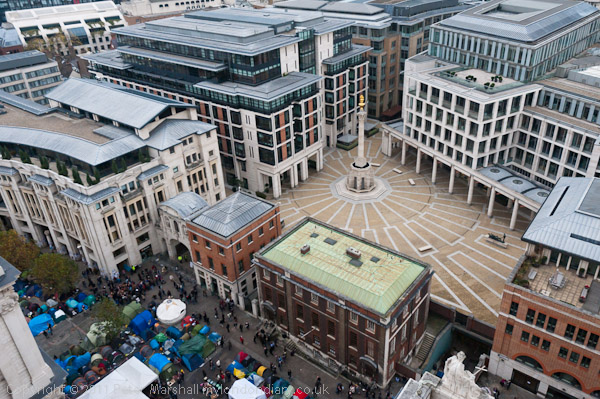
Occupy London and Stock Exchange from St Paul’s. Nov 2011
Some years ago, I was asked by a charity to photograph an event they were organising inside St Paul’s, but they had problems in getting permission from the cathedral authorities. Although when I arrived a helpful verger escorted me to a suitable position, shortly afterwards a more senior official came to escort me outside again, as they had an agreement with an agency who objected to other photographers taking pictures.
So this time, I made very sure that I would be able to take pictures, and had a talk with the Press Office there about how I would be able to work. I would be allowed to stand in an area with my back to one of the pillars of the dome, where I would have a good view to the centre of the cathedral, and during the service I would not be allowed to move around or use flash. There were some events at the end of the service and I could move to cover them, although again they weren’t too happy about flash, suggesting I should ask for permission at the time if I needed to use it.
And it was in some ways a good position, but there were several problems. First was the lighting, which as this was an evening event was pretty dim. The cathedral is a very large space and the general light levels are low, although there are a few better lit areas where some of the action takes place. But even at ISO 3200 I was still only getting exposure readings like 1/40 f5.6.
I should have borrowed a long fast lens for the event as I don’t own one. I’d hoped to get by with a Sigma 24-70 f2.8, but it wasn’t long enough, and in any case the pictures I was getting weren’t quite sharp enough. The Sigma 28-300 f3.5-6.3, a perfectly adequate performer in good light, also proved hopeless in these conditions. I tried using the Nikon 18-105 on the D300, but that wasn’t too great either, but then I had a thought and switched it to the D700 and things began to work much more sweetly. It wasn’t quite long enough (a 157mm equivalent) and being a DX lens it reduces the camera to 6Mp, but it was still fine – and I found I could even get better results by using it at ISO 2000. They weren’t great pictures, but they did what was needed – and I could even crop them a bit later.
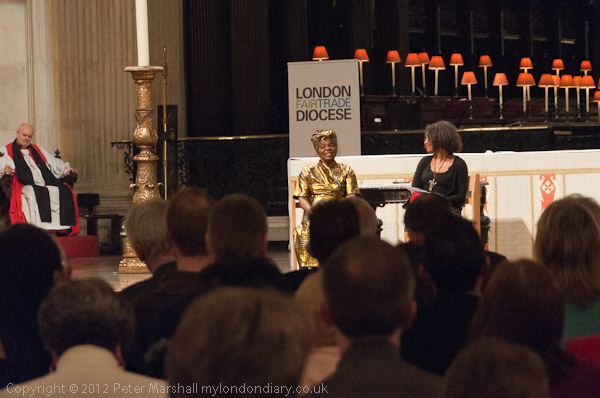
From my viewpoint with the 18-105mm at full stretch (slightly cropped)
The following day I spent some time trying to work out why the two Sigma lenses hadn’t done the job. Testing them in decent light they seemed to have no problems, but I had noticed that part of the problem in the cathedral was getting accurate focus. I realised that because I’d not had problems before I’d not got around to using the ‘AF Fine Tune’ for either lens (it’s in the Set up Menu), so I spent some time adjusting that – and it did make just a little difference.
But I think the biggest difference is probably that the 18-105 is the only one of the three that is a ‘VR’ lens (and for once I remembered to make sure it was on.) Most of the time I don’t notice any difference with VR, but these are the kind of conditions where it really does become useful.
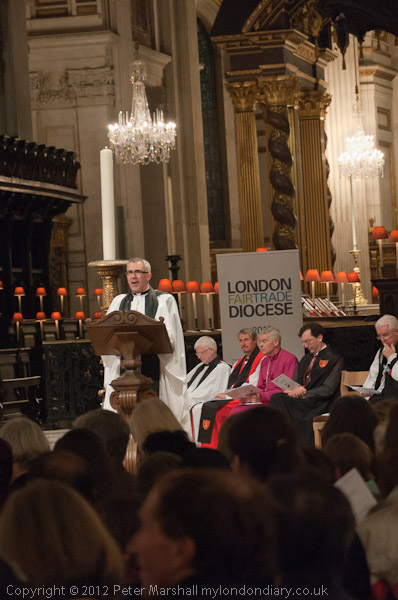
The other lens that was really useful was the 10.5mm, which let me take some overall views, stretching up at arms length to see well over the section of the congregation sitting in front of me. Who were another major problem. For those parts of the service where they remained seating I could see over them to the various bishops and others leading the event, at least at waist level and above. But once the congregation stood up, I might as well have been outside the building. And they did a lot of standing.
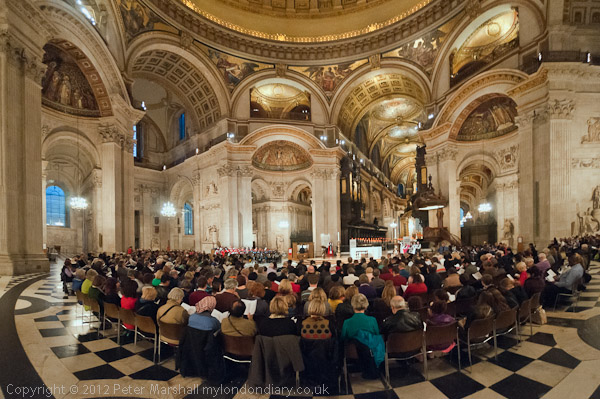
Camera shake is seldom a problem with the 10.5mm, and the f2.8 maximum aperture helps. As often, I’ve converted the image to a cylindrical perspective to get the pillars of the dome upright and straight. Framing is a little tricky when holding the lens well above your head, but it was easy to take a few tries until I got it right, holding the camera more or less level and getting a little of the curve of the dome at the top of the frame. As well as the perspective change I also used Lightroom’s manual lens corrections to tidy the image up a little and get the verticals more or less vertical.
Despite the cathedrals ‘no photography’ rule – and a note in the order of service reminded people of it – there were people much closer than me to what was taking place using cameras and phone cameras through most of the event, and when the children’s choirs started singing around fifty people rushing forward in front of me to get closer and take pictures. So at that point, despite my instructions I joined them, though unlike quite a few of them I didn’t use flash because I didn’t have it on my camera at that time.
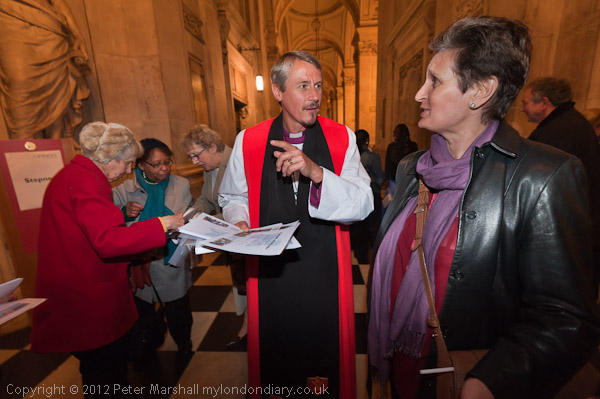
I had a long list of things the organisers wanted me to photograph at the end of the service, but there were so many people milling around it was impossible to follow the instructions. Given that everyone else was taking pictures in the chaos, I just stuck my flash on the camera and got on with things as best I could, now using the 16-35mm.
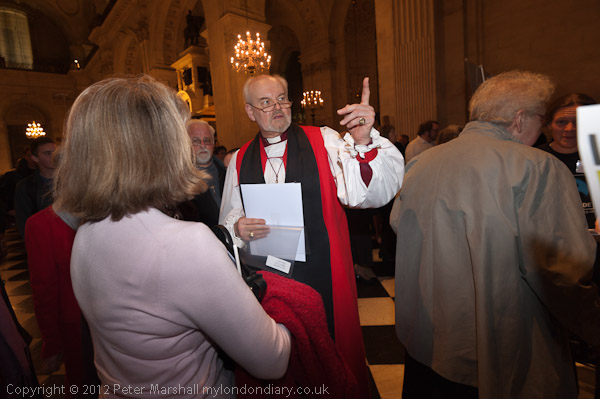
Bishop of London, Richard Chartres, waving a finger in the air in this picture, is now in the news as one of the leading candidates to succeed Rowan Williams as Archbishop of Canterbury. Chartres, who lost out to Williams in the last round is now listed by William Hill at 7/4, narrowly trailing the 6/4 favourite, John Sentamu, Archbishop of York.